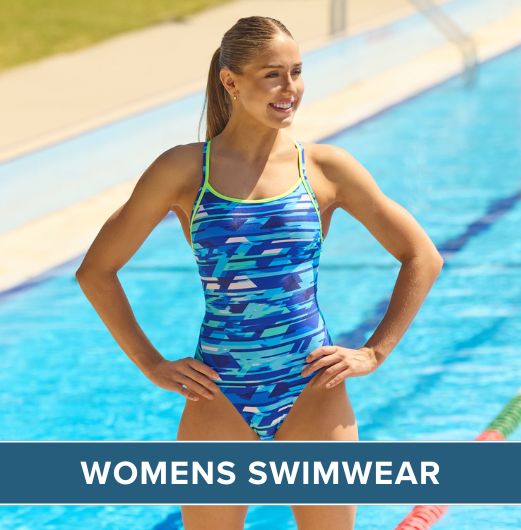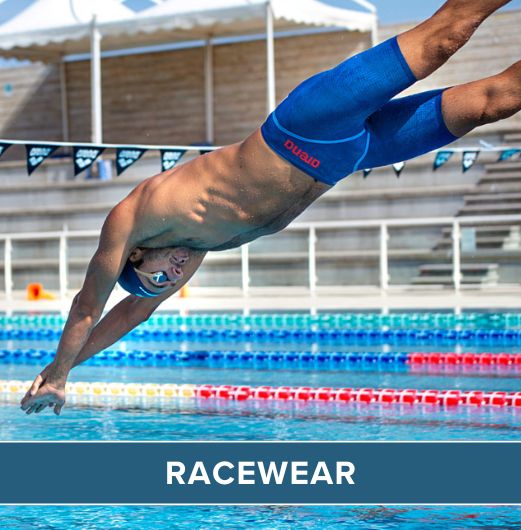There's very little needed for the sport of swimming at a very fundamental level. You have the athlete, and you have a swimming suit. That said, the amount of technology that can be packed into a swimsuit is staggering.
Gone are the days of swimming in basic pair of trunks or swimsuit, modern technology is able to provide features like body compression to aid in streamlining, low profile seams and water resistant materials to help an athlete be as fast as possible. Going further, certain full body designs are able to augment an athlete's natural ability to the point where the swimwear is providing some of the forward momentum. Obviously this can be a slippery slope where the technology is taking the place of the athlete's prowess. At that point, it becomes less a factor of who is the fastest swimmer, and more of who has the most technology in their swimwear. Enter FINA.
FINA is the international governing body that defines the standards by which all sanctioned swimming events are held to. Boasting a rich history, FINA was founded after the summer Olympic games in 1908 by a union of the swimming federations of Belgium, Britain, Holland, Finland, France, Germany, Hungary and Sweden. As of 2015, FINA included 208 different swimming federations from dozens of countries, making FINA an extremely diverse and thoroughly adopted organization. The need was obvious from the beginning for a standardized set of rules by which all participating countries could use to hold swimming events and FINA has been holding sway ever since, revising their rules with the times. One of the things that has changed significantly since their inception in 1908 is the technology used in swimwear and their regulations have changed as well. FINA meets every four years, their meeting coinciding with the World Swimming Championships. They meet in two different sessions, the General Assembly and the Technical congress. Each congress has 2 voting members from each of the Swimming Federations that make up the FINA organization. The technical assembly adds in a number of non-voting members that also contribute to discussion. There is a special teams subset of the FINA organization made up of 22 representatives called the FINA Bureau is designed to be a fast acting group that can meet to deal with special situations as they arise and need speedy decisions made, outside the normal 4 year meeting cycle. When it comes to swimwear, FINA has very specific ideas on how the swimwear should be able to benefit the athlete, specifically that the event still be about the athlete and less about the swimwear. At the same time, FINA recognizes the innovation that designers have been able to accomplish with swimwear in reducing drag, increasing body compression and improving water resistance. These things are deemed within the realm of acceptable performance increases. When the swimwear starts to increase the swimmers effectiveness by assisting them with the act of swimming, that's where FINA draws the line. That line is, at times, very faint, but FINA makes the hard decisions and sets the regulations for all World Championship, Olympic, Olympic qualifiers and other FINA sanctioned events.
FINA regulates the types of materials that can be used in allowed swimwear and the shapes of swimwear that are allowed. This extends to swimsuits, swimming caps and goggles. Applicants must be the company that actually produced the swimwear and there is an extensive submission process, including complete bill of materials used as well as samples of the swimwear and the material used to make it. There is a modest fee associated with sending an application to FINA in order to be judged in order to weed out those less serious applicants as well as to help fund the organization. After coming to a decision process, each model of accepted swimwear is added to a published document available for any professional swimmer to check. That model of swimwear can also advertise itself as being FINA approved.
FINA approved swimwear must be used in any FINA sanctioned event. FINA has a long history with regulating professional swimming competitions, and all of the modern rules used today are a result of their hard work and dedication. For a piece of swimwear to receive the designation of 'FINA approved' is a high calling and the goal of any high end swimwear designed for professional use. Without the FINA organization and all their hard work in shaping the sport of swimming over the course of the last one hundred years, swimming and the athletes that participate would look very different.
 Free Tracked UK Delivery
Free Tracked UK Delivery Hassle Free Returns
Hassle Free Returns Next Working Day OPTION
Next Working Day OPTION Found It Cheaper?
Found It Cheaper?













